Stephen W. Hiemstra's Blog, page 235
December 9, 2016
First Fruits
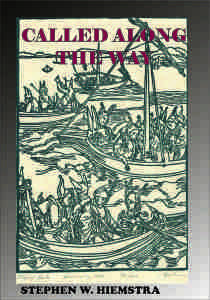 “The LORD said to Moses,
“The LORD said to Moses,
Consecrate to me all the firstborn.”
(Exod 13:1-2)
First Fruits
By Stephen W. Hiemstra
Around 1980 after I returned from year’s study in Germany, I returned to Iowa to visit my grandparents and other family. My grandparents had moved to Oskaloosa at that point, but continued to rent the farm to a neighbor who purchased the farm outright about four years later. Grandpa Frank and I drove out the farm to take care of some chores when he engaged me in conversation about seminary. He encouraged me to go to seminary saying that he would pay my tuition, but I was more interested in the prospect of entering a career in agriculture. I will always remember the look that he gave me—he clearly thought I was nuts to even consider farming.
Later in that trip I drove up to Clarion, Iowa to visit my Uncle Hubert’s family who all farmed a section of land that Hubert had purchased during the Great Depression. Hubert, who was Frank’s cousin and not a close relative, bought land when everyone else was leaving agriculture in those days because he felt strongly that families should stick together and that farming afforded the opportunity for children to grow up with roots that were not available to kids growing up in the city. Hubert mentored my father when he attended Iowa State University in the 19050s and then he mentored me when I attended Iowa State. As a local republican party chairman, he knew everyone and introduced me to the governor and several presidential candidates who would always stop by for a visit at local political gatherings.
Hubert’s kids did not pick up his interest in agricultural politics. Hubert set up his kids, a son and two daughters, in farming that same section of land and built himself a modest home on one of the properties as a retirement residence. His generosity led, however, to family conflict because his son, the oldest, believed that he should inherit the entire property. This disagreement led to a family split. When I would visit, I would be received at each farmstead and bear news of the siblings at each stop along the way. They were so close and yet so far from each other—Hubert’s generosity was not enough to overcome this jealousy and his pain ran deep enough that years later he despaired greatly, but always to himself.
On this particular trip, I was invited to a dinner party but everyone seemed a bit distant. I sat on a couch for a few minutes before I recognized that the young woman sitting next to me was someone that I was actually quite fond of several years earlier. She was one of Hubert’s grand-daughters and lived in Minnesota, far from my usual stomping grounds when I attended Iowa State. As we talked, she related how she had been a year in Brazil as a foreign student, much like I had been in Germany. She also felt rather distant in the group. Recognizing a common issue, I questioned other family members about why they were not talking with us. They responded that they did not think that we, as world travelers, would find their company very interesting. I quickly dispelled that idea; the ice was soon broken; and I was able to enjoy their hospitality to its fullest.
Hospitality was always a core value in the Hiemstra family.
On a later trip in October 1996, my office at the Comptroller of the Currency sent me to an agricultural bankers’ conference in Des Moines. Because my uncle, Dave, had been diagnosed with pancreatic cancer in August, I rented a car and drove to Cedar Rapids to visit him. Dave met me with complete grace and we spent the day quietly putting together puzzles, which were long a favorite family pass-time. Puzzles offer shy people the opportunity to hang out with no requirement that anyone be forced to make conversation. Conversation was certainly not on my mind—what do you say to someone dying that you will never see again in this life?
At one point, we took a break from putting puzzles together and Dave made a puzzling comment—“I don’t know that I am good enough to go to heaven”. I was shocked; I took his statement as a theological question; I was shocked because his brother, John, is a pastor and I certainly was not—at the time, I was only an agricultural economist—why was he asking me? I assured him that as a Christian his salvation was assured, even if life is sometimes a bit confusing. To make my point, I cited the Apostle Paul:
“So to keep me from becoming conceited because of the surpassing greatness of the revelations, a thorn was given me in the flesh, a messenger of Satan to harass me, to keep me from becoming conceited. Three times I pleaded with the Lord about this, that it should leave me. But he said to me, My grace is sufficient for you, for my power is made perfect in weakness.” (2 Cor 12:7-9)
If the Apostle Paul could suffer weakness and be saved, then so could we, I argued. Dave seemed satisfied by my explanation and remained ever gracious. When I stood speechless at his door, not knowing what to say, he reached over and kissed me on the cheek goodbye—Dave is the only man that I have ever allowed to kiss me.
Dave’s question about salvation and my grandfather’s offer to pay for seminary puzzled me for years. I later learned that my grandfather held the doctrine of the first fruits close to his heart. He was not himself the oldest sibling, but as a young man wanted to enter the ministry but did not have his father’s support so he went into farming. My uncle, John, was the oldest sibling and pursued a career as a minister in the Reformed Church in America. As the oldest grandchild, grandpa naturally looked to me to go into ministry and in God’s timing I did eventually hear the call.


December 6, 2016
Niebuhr Examines American Christian Roots, Part 2
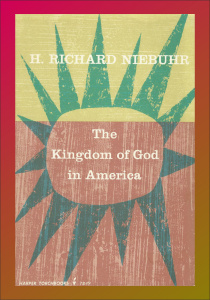 H. Richard Niebuhr. 1937. The Kingdom of God in America. New York: Harper Torchbooks. (Goto Part 1)
H. Richard Niebuhr. 1937. The Kingdom of God in America. New York: Harper Torchbooks. (Goto Part 1)
Review by Stephen W. Hiemstra
Skeptical postmoderns might wonder how Richard Niebuhr could see the doctrine of the kingdom of God explaining the history of the American church. But this skepticism rests in the habitus of a secular worldview, which permeates even the church today and is predominately ahistorical. Writing in 1937, Niebuhr observes:
“Any attempt to trace the pattern of the Christian movement in America must begin with the Protestant reformation” (17)
which
“was characterized above all by its fresh insistence on the present sovereignty and initiative of God.” (17).
In some sense, Niebuhr sees Protestants differing from Catholics in three primary doctrines, summarized in the distinction between two Latin phrases: visio dei (God’s vision) and regnum dei (God’s rule; 20). Niebuhr explains:
“The principle of vision suggests that the perfection of the object seen is loved above all else; the principle of the kingdom indicates that the reality and power of the being commanding obedience are primarily regarded.” (20)
Niebuhr sees three outcomes from this distinction: (1) the rule is direct, not delegated to a hierarchy of priests and bishops; (2) God’s sovereignty immediately negates all human sovereignty—God’s freedom, not human freedom, is in view; and (3) the idea of a kingdom implies immediacy—God is sovereign now as well as the future; for the Protestant, the kingdom of God was truly at hand (20-25).
The unique thing about kingdom of God in America was that the “New World” was free of the institutions that plagued the “Old World” in Europe. In the Old World, Protestantism was a reform movement against these old institutions; in the New World, Protestantism needed to build institutions of its own—it was not enough simply to protest the old forms. Niebuhr describes this new challenge as the problem of “Constructive Protestantism.” (36). He writes: “Here Protestantism could turn from protest and conflict to construction.” (43)
Niebuhr argues his case for Constructive Protestantism in terms of:
“the three notes of faith in the sovereign [confession of loyalty to the sovereignty of God], the experience of the love of Christ [experience the reign of Christ] and hope of ultimate redemption [the hope of the coming kingdom].” (127)
He organizes his chapters around these three notes of faith and sees them marked out in history writing:
“The expectation of the coming kingdom upon earth which the Quakers had brought with them and the Great Awakening had made vivid was nurtured by the continuing revival until it became the dominant idea in American Christianity. If the seventeenth was the century of the sovereignty and the eighteenth the time of the kingdom of Christ, the nineteenth may be called the period of the coming kingdom.” (150)
Niebuhr traces these beliefs through the writings of many evangelists who participated in this dynamic movement of Protestantism in American history and likens it to the movements in a symphony which actually played out as a pattern in different times and places (164-165).
But what happens when the movement is played out and all that remains of a dynamic movement crystalizes into static institutions and creeds passed on to new generations? Niebuhr writes:
“With the loss of the sense of common task in proclaiming the kingdom of Christ, sectional, racial, and cultural differences assuming increasing importance. The more attention was concentrated upon the church the greater became the tendency toward schism.” (178)
In some sense, Niebuhr sees the current conflicts among protestant groups, dating back into the late nineteenth century, as conflicts between different strains of this greater protestant movement, some more crystalized than others, but all having reached the point of a spent force. In this context, the Pentecostal movement could be sense as an entirely new grand narrative which is replacing the older, mainline protestant movement that remains a vital force only in remnants.
Richard Niebuhr’s The Kingdom of God in America provides important insights into the current dilemmas facing Protestant churches in the United States. One gem stood out for me:
“Edwards sought to convince the mind rather than to stir the emotions and was genuinely surprised at the display of ‘religious affections’ which followed some of his stuffy logical preaching.” (106)
This statement suggests that in the absence of good teaching, revival becomes less likely. Such gems make reading Niebuhr a real delight.
Reference
Elliott, Matthew A. 2006. Faithful Feelings: Rethinking Emotion in the New Testament. Grand Rapids: Kregel Academic and Professional. (Review: Part 1 (http://wp.me/p3Xeut-1dc) and Part 2 (http://wp.me/p3Xeut-1dv)).
In some sense, Protestants then faced the same dilemma that deconstructionists face today. Having deconstructed every authority and institution in sight, what replaces them?
This is an example consistent with what was later referred to as the cognitive theory of emotions (we get mad about things we think are important).


December 4, 2016
Advent Prayer
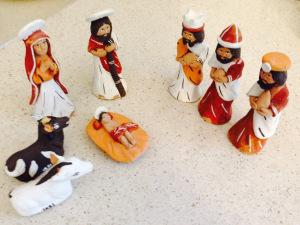
Art by Stephen W. Hiemstra
Compassionate and Merciful Lord,
We approach your throne of grace with heavy hearts,
confident that the Christ child will soon arrive and
equally confident that we will not be ready.
Have mercy on us.
Forgive our sins this year,
sins knowing committed,
sins committed in your full view,
though we cannot forgive ourselves so easily.
Have mercy on us.
Open our hearts none the less,
to those less fortunate than us,
to those whose children may be hungry,
to those that may not yet be our neighbors.
Have mercy on us.
Prepare us for the arrival of your son,
yet a child,
yet unwanted,
yet unknown to the world.
Through the power of your Holy Spirit, heal our wounds,
visible and hidden,
that joy might return,
when you come.
In Jesus precious name, Amen.


December 2, 2016
The Art of Reading
 “After three days they found him in the temple,
“After three days they found him in the temple,
sitting among the teachers, listening to them and asking them questions.
And all who heard him were amazed at his understanding and his answers.”
(Luke 2:46-47)
The Art of Reading
By Stephen W. Hiemstra
During summer vacations in grade school, my dad sponsored reading contests. My sister, Diane, and I kept records of all the things that we read during the summer and at the end of the summer we earned some sort of prize for having read the most. I have long forgotten the prizes that we earned, but I loved reading the Hardy Boy and the Lone Ranger series and frequent trips to the library and local used book stores where such books could often be purchased for something like a quarter. Long after our summer reading contests were forgotten, I found it natural to explore new reading topics during the long summer school breaks.
In the fall of 1971 at Parkdale Senior High School, I was invited to take an honors history course with Mrs. C. Signing up for this class was a big deal because we earned college credit and attended seminars at the University of Maryland. Actually, I only remember a single seminar on a Saturday at the university and a huge reading list for the class. I struggled to complete the reading and to write the paper that we were assigned. Friends of mine skipped the readings and made up fanciful book titles to justify imaginative conclusions to their papers. It was an open joke throughout the class, but Mrs. C. never called them on it. The whole affair offended my sensitivities and I was proud to have completed the readings, but when Mrs. C. gave me a B for the class, I complained exposing the cheaters for making light of the class. She never said anything, but changed my grade to an A.
My experience with history did not sour me on reading.
I did not always understand what I was reading, but I found reading useful on two levels, as I learned in my college experience with economic history. On the surface level, was reading for content picking out the facts and the dates, as in reading history only as a narrative or chronology. On a deeper level, however, was to read paying attention to how the author argued his case. The case could be argued in terms of historical observations with hypotheses proven, presumably, by the number of observations explained by the hypothesis.
I learned to solve the problem of not understanding a particular author by reading more than one author in a field. A particular field, like history or psychology, started to make sense after reading a half-dozen books in the field; reading a dozen books generally made one a regular expert, even in tougher fields like learning a new computer language—as I learned later in my career. Writing book reviews throughout my career has sped up the process by forcing one to study the author’s method of argumentation, even when it might not be obvious on the first pass. Of course, authors having little or no obvious structure to their thought—chapters thrown together in kind of like a verbal collage—were also exposed at this point.
None of this was obvious in grade school when I started writing. I read because I loved reading and learning new things. Things that helped make my world more interesting; things that gave me something to talk about; things that replaced maybe the emptiness of life in the slow lane. When I read and wrote myself out, life simply made more sense. And I like it that way.


December 1, 2016
Caminata de Oración (Prayer Walk) in Manassas, Virginia
“¿No te he mandado? Se fuerte y valiente. No tengas miedo; No te desanimes, porque Jehová tu Dios estará contigo dondequiera que vayas.” Josue 1: 9
Lugar: Desde el Centro Comunitario de Georgetown South atreves de la comunidad.
Día: 1 de Diciembre del 2016
Hora: 7 p.m.
¿Por qué una caminata de oración? Para reunir a personas de todas las religiones de dentro y fuera de la comunidad para orar por el alivio al miedo que ha causado el homicidio ocurrido el 25/11/16. La comunidad de Georgetown South en Manassas, Viriginia ha sufrido ocho tiroteos en el transcurso del 2016. El que resulto con graves consecuencias fue el homicidio de José Tomas Velasquez, de 44 años que ocurrió el día 25 de noviembre a la l a.m.
Algunos de estos incidentes están relacionados con los mismos sospechosos, pero todos tienen una cosa común; Los que dispararon no son de nuestra comunidad.
Ellos vinieron a nuestra comunidad para herir, robar y matar, pero vuelvo a repetir no son de nuestra comunidad.
Ellos necesitan entender que sus acciones no van alterar o detener el progreso de esta comunidad que está trabajando por un cambio a sí mismo.
La Comunidad de Georgetown South necesita entender que es apoyada por todos los presentes esta noche, muchos de los cuales no viven aquí, pero que apoyan a esta comunidad de todo corazón.
Ruta del Recorrido: Iniciara en: 9444 Taney Rd
Continuando por la Taney hacia la Grant Avenue. Luego procediendo de la Grant hacia la Byrd Dr. Luego Aspen y Byrd hacia l “H” Green (detrás de la 9251 Byrd) hacia Maury y Taney, de la Maury a Buckner Road. Luego a la Taney y retornar al Centro Comunitario.
Direcciones: Mantengan sus velas encendidas durante toda la caminata para poder ver lo que se esconde de tras de la oscuridad en nuestra comunidad.
Para más información:
Martinez Family Ministry: OASIS Mission in Manassas Virginia (click here)
****************************
English translation:
Prayer Walk
“Have I not commanded you? Be strong and courageous. Do not be afraid; do not be discouraged, for the Lord your God will be with you wherever you go.” Joshua 1:9
Location: Georgetown South Community Center through the community
Date: December 1, 2016
Time: 7 p.m.
Why a prayer walk? To bring together people from all faiths from within and outside the community to pray for relief from the fear that has been brought about by the homicide that occurred on 11/ 25/16.
The Georgetown South community in Manassas, Virginia has experienced eight drive-by shootings in 2016. The most serious of which resulted in the homicide of Jose Tomas Velasquez, age 44 on November 25th at lam. While some of these incidents are related with the same suspects, they all have one thing in common; the shooters are not from our community.
They came to our community to wound, rob, and kill, but they are not from among us. They need to understand that their actions will not alter or deter this community’s progress to change itself. The Georgetown South community needs to understand that it is supported by all those present tonight, many of whom do not live here, but who support this community wholeheartedly.
Route:
Begin: 9444 Taney Rd
Continue on Taney to Grant Avenue. Proceed down Grant to Byrd Drive to Aspen and Byrd then through the green “H” Green (behind 9251 Byrd) to Maury and Taney, down Maury to Buckner to Taney and return to the Community Center.
Directions: Try to keep your candles lit the entire walk chasing the shadows and what lurks within away from our community.
For more information:
Martinez Family Ministry: OASIS Mission in Manassas Virginia (click here)


Life in Tension: Hear the words; Walk the steps; Experience the joy!
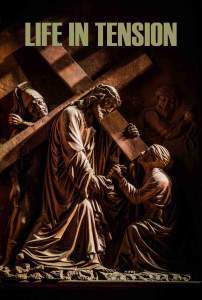
Buy at: http://bit.ly/T2PNEUMA3
Life in Tension: Reflections on the Beatitudes by Stephen W. Hiemstra
Purchase (click here), use code Y6SLXQ25.
For more information (click here).
Newsletter (click here).


Thinking about publishing your own book?
 Thinking about publishing your own book?
Thinking about publishing your own book?Learn why self-publishing can be an effective way to get your fiction or nonfiction book out to readers – and how the process works!
Featuring keynote speaker Hallee Bridgeman (popular novelist and cookbook author) and workshops on:
· The craft of writing
· The logistical details of publishing
· The marketing process.
Plus, you can participate in targeted group coaching sessions, so you can leave the conference with a firm plan of where to go from here.
Price (including lunch) for nonmembers:
· Early Bird (through Dec.31) $60
Learn more: ccwwriters@gmail.com or 703-691-1676
Register online at http://capitalchristianwriters.org/index.php/2017-self-publishing-conference/
“Self-publishing isn’t easy, but it’s fun and sometimes even lucrative. Plus, your book could change the world.” – Guy Kawasaki, co-author of APE: Author, Publisher, Entrepreneur: How to Publish a Book


November 29, 2016
Niebuhr Examines American Christian Roots, Part 1
 H. Richard Niebuhr. 1937. The Kingdom of God in America. New York: Harper Torchbooks. (Goto Part 2)
H. Richard Niebuhr. 1937. The Kingdom of God in America. New York: Harper Torchbooks. (Goto Part 2)
Review by Stephen W. Hiemstra
Sometimes books refuse to stay on the shelf and just scream to be read and re-read. Richard Niebuhr’s The Kingdom of God in America is such a book, which I first read in 1978 as a graduate student. Niebuhr, Karl Barth, and Dietrich Bonhoeffer are frequently described as belonging to the neo-orthodox school of theological thought, which attempts to reconcile reformed theology with the enlightenment and emphasizes God as the principal source of theological doctrine.
Niebuhr begins The Kingdom of God in America, writing:
“The following chapters attempt to interpret the meaning and spirit of American Christianity as a movement which find its center in the faith in the kingdom of God.” (ix)
This is a bold claim which echoes Jesus’ early teaching following that of John the Baptist in the synoptic Gospels:
“Now after John was arrested, Jesus came into Galilee, proclaiming the gospel of God, and saying, The time is fulfilled, and the kingdom of God is at hand; repent and believe in the gospel.” (Mark 1:14-15 ESV)
Niebuhr goes on to observe:
“In the early period of American life, which foundations were laid on which we have all had to build, ‘kingdom of God’ meant ‘sovereignty of God’; in the creative period of awakening and revival it meant ‘reign of Christ’; and only in the most recent period had it come to mean ‘kingdom on earth’”. (xii)
Niebuhr expands on this introduction citing three convictions. The first conviction is that: “The true church is not an organization but the organic movement of those who have been ‘called out’ and ‘sent’” (xiv). The second conviction is that this movement is dialectical:
“expressed in worship and in work, in the direction toward God and the direction toward the world which is loved in God, in the pilgrimage toward the eternal kingdom and in the desire to make his will real on earth.” (xv)
The third conviction is that: “American Christianity and American culture cannot be understood at all save on the basis of faith in a sovereign, living, loving God.” (xvi)
In launching into this historical study of American Protestantism, Niebuhr takes as a presupposition that faith in Christ is not an epiphenomenon, by which Marxian interpreters mean a secondary consequence (4), but rather fundamental to understanding who we are. Much like the Exodus from Egypt is the touchstone of Jewish identity; our identity lies in our faith experience. An historical exploration of our faith origins is likely therefore to yield insights into our present and our future and patterns that we might discern (1). The present challenge being the preservation of “American civilization.” (5)
This heady charge for a book written in 1937 deserves a bit of attention. In 1937, the split between fundamentalists and liberals in the American Presbyterian church (1925) was still fresh and incompletely consolidated (Longfield 2013, 158), in part, because even liberals grew up steeped in the church and cultural accommodation in response to postmodernism was still in its infancy. In 1937, the Great Depression was ongoing, the Second World War had yet to include the United States, and the evangelical revival of the Billy Graham years (1940s through 1960s) was just getting started. The idea that a book written in 1937 anticipated the problem of secularism in the postmodern period astounds me. Yet, clearly the seeds had already been planted.
These seeds are real and is seen in the Niebuhr characterization of liberal Protestantism, which remains widely cited and consists of a single sentence:
“A God without wrath brought men without sin into a kingdom without judgment through the ministration of a Christ without a cross.” (193)
While this characterization might be hotly debated, it is worth pointing out that Niebuhr himself generously spoke about the dialectical nature (conviction two above) of Christian faith that could encompass both liberal and evangelical articulations of faith, at least at in their initial characterizations.
Helmut Richard Niebuhr (1894 – 1962) received his doctorate from Yale University (1924) and taught ethics there for several years. His older brother, Reinhold Niebuhr, was also a well-known theologian and author. His book, Christ and Culture, is also still widely cited and was the focus of a recent book by D.A. Carson.
In part 1 of this review, I have given an overview of Niebuhr’s work. In part 2, I will delve deeper into his arguments.
References
Longfield, Bradley J. 2013. Presbyterians and American Culture: A History. Louisville: Westminster John Knox Press. (Review: Part 1 (http://wp.me/p3Xeut-Tj) and Part 2 (http://wp.me/p3Xeut-Tp)).
https://en.wikipedia.org/wiki/Neo-orthodoxy.
Niebuhr, Richard. 2001. Christ and Culture (Orig. pub. 1951). New York: HarperSanFrancisco. (Review: (http://wp.me/p3Xeut-Po).
Matthew actually prefers the term, kingdom of heaven (e.g. Matt 4:17).
Missing in the liberal worldview is the key doctrine of the atonement that simply says that Christ died for our sins. If sin is viewed as unimportant, the work of Christ is likewise unimportant, contrary to the teaching of Paul, for example:
“For I delivered to you as of first importance what I also received: that Christ died for our sins in accordance with the Scriptures, that he was buried, that he was raised on the third day in accordance with the Scriptures, and that he appeared to Cephas, then to the twelve.” (1 Cor 15:3-5 ESV)
And, of course, also contrary to the teaching of the Apostle Peter on the Day of Pentecost:
“Brothers, what shall we do? And Peter said to them, Repent and be baptized every one of you in the name of Jesus Christ for the forgiveness of your sins, and you will receive the gift of the Holy Spirit.” (Acts 2:37-38 ESV)
Following Peter, confession of sins is usually taught as a condition for coming to faith in Christ. To deny the atonement of Christ is to deny New Testament teaching about the work of Christ and to ignore the primacy of mercy in God’s own self-disclosure in Exodus 34:6.
Reviews of Carson: Part 1 (http://wp.me/p3Xeut-PZ) and Part 2(http://wp.me/p3Xeut-Ql)).


November 27, 2016
Prayer for Family
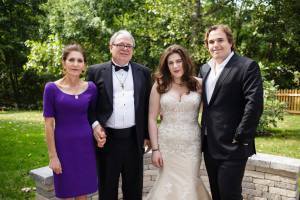 Almighty Father, Beloved Son, Holy Spirit,
Almighty Father, Beloved Son, Holy Spirit,
We give thanks for the gift of family.
For those that went before us who brought us together,
made us who we are and led us to faith in you.
For the sacrifices of our parents that brought us into this world,
for the time that we have been able to share together,
for the children that you have brought into our lives.
For our spiritual family, which is the church,
where we live and grow and have our being.
For the blessings that you have showered on us out of your love for us and
the example of perfect love that only you provide.
For all these things, we gift thanks and give you and you alone the glory.
In Jesus’ name, Amen.


November 25, 2016
It’s Academic
 “Beloved, do not believe every spirit,
“Beloved, do not believe every spirit,
but test the spirits to see whether they are from God,
for many false prophets have gone out into the world.”
(1 John 4:1)
It’s Academic
By Stephen W. Hiemstra
I got angry.
During the fall of my senior year at Parkdale Senior High School, Parkdale decided to begin competing in the It’s Academic show which aired on NBC Channel 4 television in the Washington metro area.[1] To establish the team, the faculty sponsor walked down to the guidance office and asked for the names of the top 15 students in the school. I was not on the list and I got angry. My English teacher was the faculty sponsor and must have heard me complaining about it in class because an open interview was scheduled down at the television studio—anyone who wanted to compete was welcome to attend.
The interview attracted little attention. There were the top 15 students and there was me. The interview consisted of a mock It’s Academic quiz show where the interviewer would pose a question and the first student to raise a hand got to answer the question. No penalty was assigned for an incorrect answer. Because the questions were pretty basic questions about science and other academic subjects, the basic contest was to see who could raise their hand first. As it turned out, I personally answered about 90 percent of the questions posed correctly through fast hand-raising and was invited to join the team.
The other students, all classmates and friends, were livid. My performance made them look pretty stupid and they resented it. The faculty sponsor set up after school meetings to prepare for the show and we started meeting on a regular basis.
About that time, I decided that I wanted to attend Indiana University and my father agreed on one condition—I needed to get a job working nights and weekends to help pay the expense of going to school out of state. Consequently, I began selling children’s shoes at a shop in Capital Plaza Mall.[2]
Selling children’s shoes was more of an education than I bargained for. The shoes were expensive, upscale brands which attracted customers primarily from the District of Columbia. African American women, who could not afford a lot of things in 1971, felt they needed to buy good shoes for their kids. By contrast, local white women in Prince George’s County, like my mom, shopped at discount stores, like K-Mart, for their kids’ shoes, not feeling it necessary to show-off by buying top-of-the-line foot-ware. Honestly, I do not think the shoes were any better. The management seemed aware of this dilemma, but were happy to charge premium prices and to slip ill-fitting shoes on many a foot to keep such status-conscious mothers happy.
Actually, a lot of the things these managers did really bothered me.
It bothered me, for example, that managers refused to let me study while we were sitting around on quiet days. While other employees sat around shooting the breeze, if I took out a book, I was assigned to sort shoes in the back or to watch the store, while the rest of them partied, blowing dope out back. It also bothered me that when President Nixon announced a price freeze on August 15, 1971 to combat inflation,[3] we were immediately assigned to raise the prices on all the shoes in the store. I guess that working in that store bothered me about as much as my studying bothered those managers, who knew they were stuck selling shoes because they neglected their own studies.
I did not earn a lot of money selling children’ shoes, but I missed afternoon practice sessions with the It’s Academic team and was placed on the back up team. Being on the back up team meant that we got to cheer for the regular team when we finally were invited on the show to compete. I loved the competition, in part, because I got to sit next to a friend who I later invited to the prom, but the team lost and lost badly. Just as in the interview, they simply did not understand the rules and complained that the other team cheated, being especially fast button-pushers. Too bad the team’s fastest button-pusher was sidelined!
[1] http://www.itsacademicquizshow.com/hi....
[2] https://en.wikipedia.org/wiki/Capital....
[3] https://www.cato.org/publications/com....






